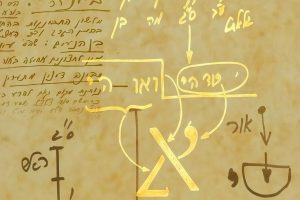|
Getting your Trinity Audio player ready...
|

Kabbalist Yehuda Ashlag (Baal HaSulam), in his article, “The Essence of the Wisdom of Kabbalah,” defines Kabbalah as
“a wisdom [that is] no more and no less than a sequence of roots, which hang down by way of cause and consequence, by fixed, determined rules, interweaving to a single exalted goal described as ‘the revelation of His Godliness to His created beings in this world.’”
Attaining the revelation of the Creator is the goal of Kabbalah. The Creator is defined as a single force of love and bestowal, which is opposite to our human egoistic force of reception.
Therefore, the wisdom of Kabbalah is based on the method by which we transform our inborn force of reception to its opposite force—love and bestowal—and by doing so, attain the upper force of love and bestowal that is the Creator. In other words, through the attainment of the force of love and bestowal, we attain the revelation of the Creator.
The first person who underwent this transformation of their nature was Adam HaRishon. He wrote a book, The Angel Raziel, where he described how the revelation of the single upper force appears to one who attains it. Other key Kabbalists such as Abraham, Moses, Rabbi Shimon bar Yochai, the ARI and Baal HaSulam each expanded and upgraded the method of Kabbalah, both in text and in teaching their students over the generations, and especially The Book of Zohar, the writings of the ARI, and the articles and commentaries of Baal HaSulam best express the wisdom of Kabbalah for us in our generation.
In other words, the basis of Kabbalah is the transformation of our nature in order to attain the Creator’s nature of love and bestowal, and Kabbalists, i.e., “receivers” (“Kabbalah” from “LeKabbel” [“to receive”]) are those who undergo this spiritual change in practice. They express their findings from their transformation in their books. The Kabbalistic books are only the results of these spiritual changes, a written statement of the changes made in the spiritual system that was first revealed to them in a broken form, as well as the final result, i.e., how they managed to connect and assemble it together.
That is why, from generation to generation, as Kabbalists advance in their transformations—called “corrections”—the method of Kabbalah also changes. A person from a subsequent generation does not have to repeat the corrections done by the previous generations. Therefore, the wisdom of Kabbalah reaches the new generation in a different form time and again, and those who apply themselves to the Kabbalistic method are completely different from one generation to the next.
Based on Lesson 1 from the World Zohar Convention with Kabbalist Dr. Michael Laitman on February 2, 2014. Written/edited by students of Kabbalist Dr. Michael Laitman.
Posted on Facebook, LinkedIn Newsletter, Medium, Quora, The Times of Israel, Twitter X